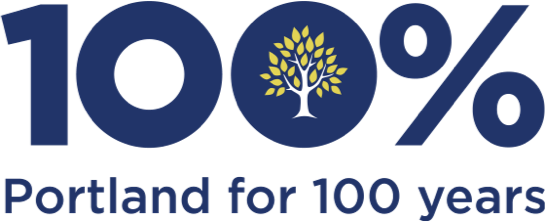
Rising to Challenges
The Pandemic of 2020

As fate would have it, the story of The Portland Clinic’s first 100 years would be bookended by the two deadliest pandemics in modern times.
The Spanish flu pandemic of 1918-20 had finally abated when the clinic opened its doors in 1921, but its devastation was still keenly felt. The virus had infected about a third of the world’s population and claimed 50 million lives, including the lives of 3,500 Oregonians.
Now, a century later, the clinic observes its 100th anniversary in the grip of a second pandemic.

We needed only to reflect that the doctors and staff members who came before us served Portland through the Depression, World War II, the social unrest of the ’60s, and even the Mt. St. Helens eruption in 1981...we’d faced challenges before, and we could do it again.
Oregon’s first case of the novel coronavirus known as COVID-19 was confirmed on a Friday — Feb. 28, 2020. By the following Monday, scores of concerned patients were flooding The Portland Clinic’s phone lines, worried sick about possible symptoms.
“There was a lot of uncertainty on everyone’s part,” recalls the clinic’s chief executive officer, Dick Clark. As the governor, health authorities and businesses wrestled with guidelines, quarantines and shutdowns, Clark and a team of key clinic staff members quickly set to work on a plan to keep essential care safe and available for patients.
As dire as things were looking, Clark was optimistic. “We needed only to reflect that the doctors and staff members who came before us served Portland through the Depression, World War II, the social unrest of the ’60s, and even the Mt. St. Helens eruption in 1981,” he says. “We’d faced challenges before, and we could do it again.”
As a first step, the clinic created a COVID-19 response team that checked in with every branch, crossing all medical specialties, every morning.
Safety measures were quickly put into place at each branch — including masking requirements, physical distancing, fever checks and, when needed, coronavirus testing — to protect patients, as well as the clinic’s providers and staff.
Changes were implemented to continue care delivery in new and innovative ways. The clinic did everything it could to keep people at home and safe, to flatten the curve. Providers determined which patients needed to be seen in person, and which could be seen in other ways.
One of those other ways — a new telemedicine program — came together at lightning speed. “It’s not like telemedicine was invented in 2020,” says Amy Mulcaster, D.O., the clinic’s chief medical officer. “Our system had the capability, so out of necessity and a lot of hard work, we got our new telemedicine service up and running in just two weeks.”
The program was a major advancement, allowing patients to stay connected with their providers remotely, through telephone or video visits. By the second week of May 2020, the clinic’s branches had recorded 12,317 telemedicine visits, compared with 5,425 in-person visits — a major shift in the way the clinic saw patients, and a clear glimpse of the future of care in a pandemic that had no end in sight.
“Looking back,” says Clark, “I’m so proud of our staff for starting and delivering, in such a short time, a program that normally would take months, and that was enthusiastically accepted by patients and providers. That was one of the miracles of our COVID-19 response.”
Looking ahead, he adds, “We know that infectious diseases will continue to be an issue in our world, even after COVID-19 is resolved. And we’ll continue to respond, to serve our patients in the best possible ways while limiting their risks.”